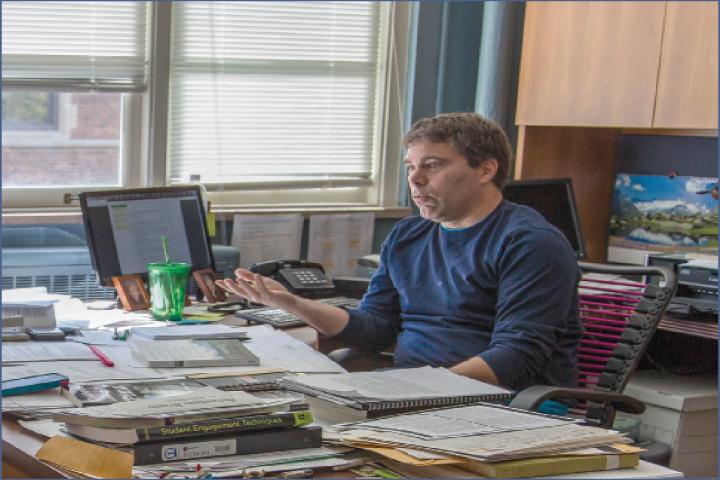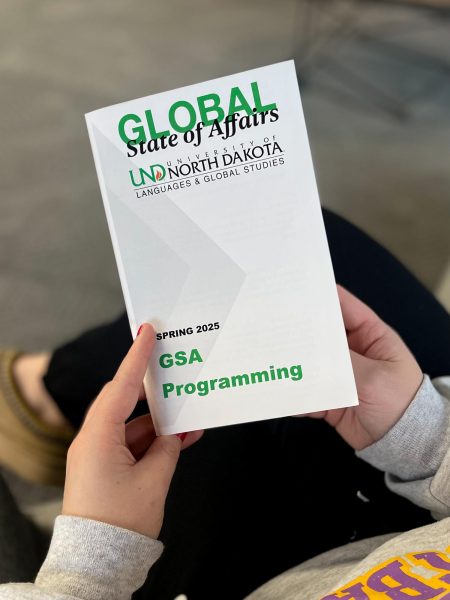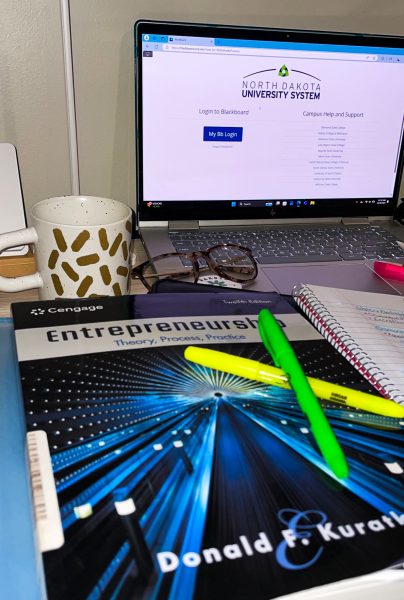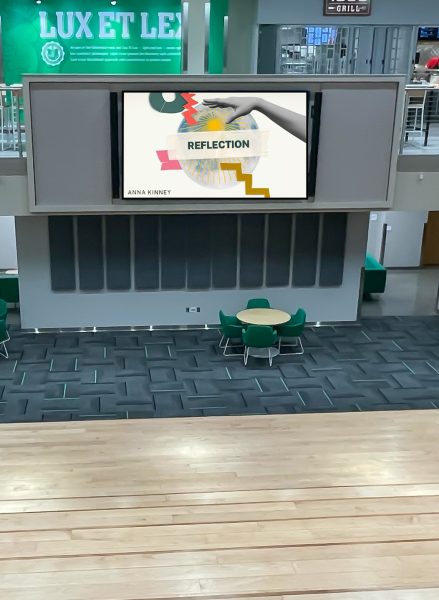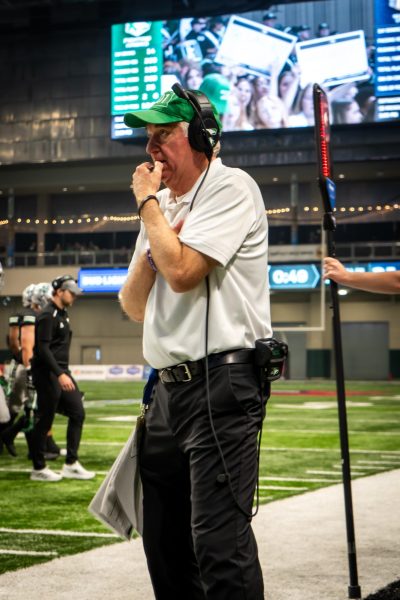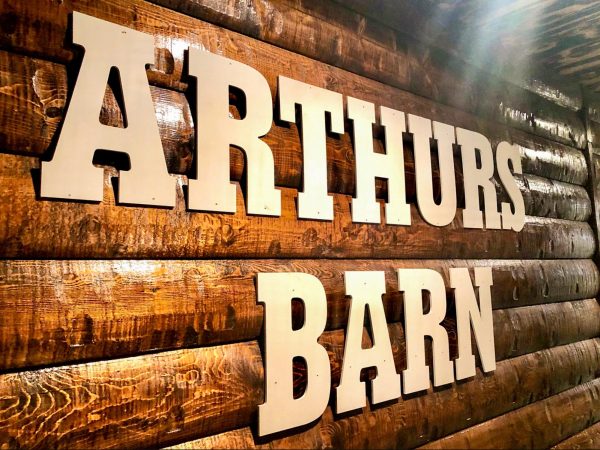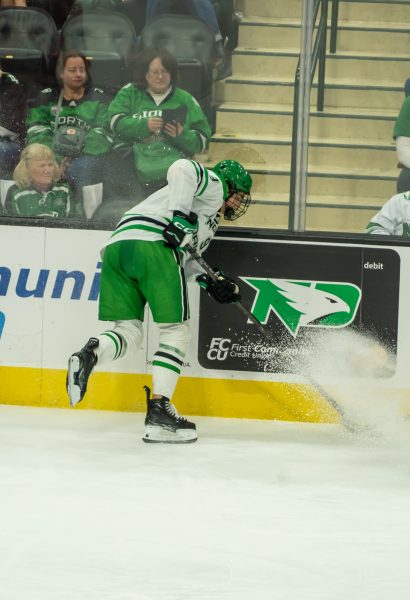Staff looks to revamp media center
Right: Sebastian Braun, chairman of the UND Department of Indian Studies, talks about the history of the Native Media Cetner on campus. Photo by Chester Beltowski/The Dakota Student
In its prime, UND’s Native Media Center was home to a magazine and many aspiring Native American journalists.
Now, the center is a mere study room.
“Currently, none of the faculty in the department of American Indian studies have the time or the expertise to run the center,” said Sebastian Braun, chairman of the UND Department of American Indian Studies. “There is no director or anyone with the skill to run the center as a communication tool.”
For now, the Native Media Center in O’Kelly Hall is used as a quiet place for students to come study and relax.
However, Braun has big changes he would like to make to the center.
His goal is to turn the center into a classroom much like the Student-Centered Active Learning Environment for Undergraduate Programs room in O’Kelly. Called the SCALE-UP room, its layout — which includes tables instead of lecture hall or traditional classroom seating — facilitates interactive, team-based activities that revolve around inquiry and creative problem solving, according to its webpage.
“I want round tables that force the students to look at each other,” Braun said. “Unlike in the SCALE-UP room, there will not be any computers at the tables.
“The students will have to focus on one another as opposed to a screen and get back to the roots of communication, face-to-face talk.”
Current projects
As the department continues to revive the center, its staff and students are taking on projects under the center’s name.
The first is maintaining an annotated collection of American Indian policy documents issued by federal and state governments.
“I have selected specific documents that illustrate these interactions and their contexts, from treaties and laws to testimonies, reports and supreme court decisions,” Braun wrote in a note on the collection’s webpage.
The collection included dozens of documents spaning from the year 1400 to the present day.
The second project reviews the impact of the oil boom on western North Dakota. This project has students reviewing satellite images of communities to record the visual changes the towns and land around them have undergone.
These communities include Mandaree, New Town and Watford City. Images of each town were taken in 2005, 2009, 2010 and 2012. These images can be viewed on the media center’s webpage.
Center history
Upon its founding in 1990 within the former School of Communication, the Native Media Center had two main purposes.
Students collaborated on a magazine, “Native Voices,” that came out twice a year with articles written and edited by the Native American students.
In 2005, the magazine went viral and transformed into “Red Nation News,” which ran for two years in much of the same way.
The program also invited Native American high school students from nearby reservations to the campus in the summer for a crash course in journalism, hoping to reel in some aspiring writers.
In the 2008-2009 school year, the program lost some of its steam with the dismantling of the School of Communication, according to Braun.
The center was moved from a larger computer center once attached to the Department of American Indian Studies to a smaller room that can only house a handful of computers, a couch and a few tables.
At this time, the grant funding provided to the center by the Knight Foundation and by the Otto Bremer Foundation ran out.
This left the center with no way to continue the magazine or recruitment of young Native American journalists. The center did not reapply for the grants because of the disbanding of the School of Communication.
The Department of American Indian Studies houses faculty from the departments of History, Anthropology and English.
Kimberly Cowden is the only professor in the department that has a communication background; however, her emphasis is in health communication rather than the journalism background that is needed to run the center, according to Braun.
Erin Cheever is a staff writer for The Dakota Student. She can be reached at [email protected].


